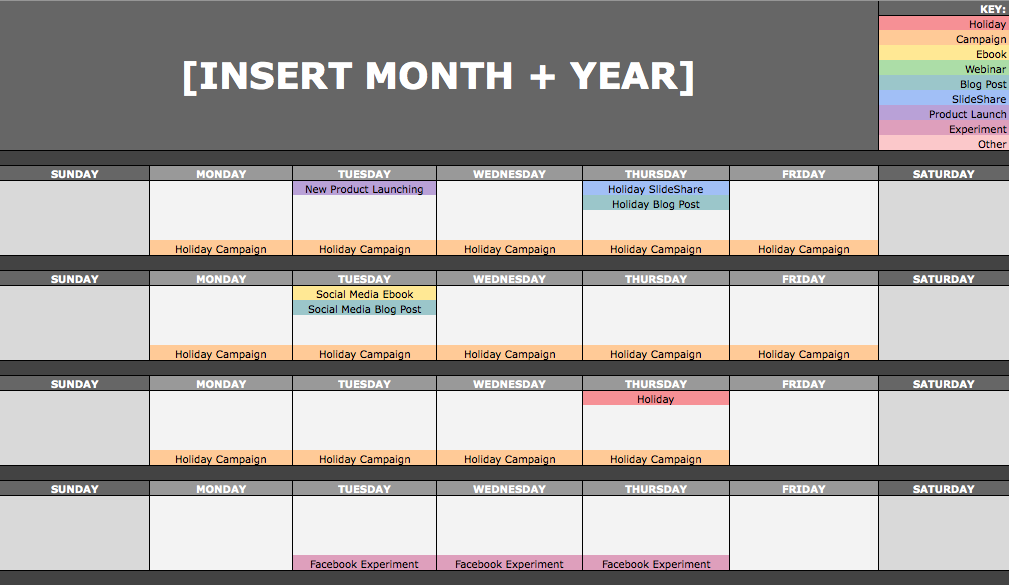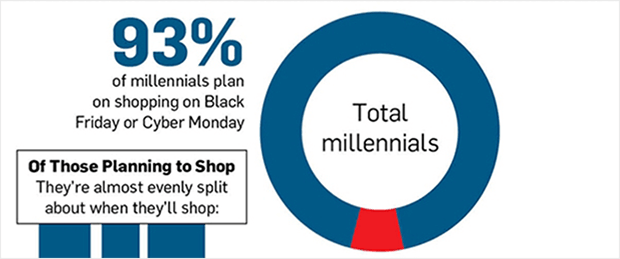
So, you have decided to launch your own digital advertising strategy. What's next? You'll find out in this article how to go about the process. This includes choosing your channel, researching your audience, and then the final step. This article will teach you how create a customer experience and split test your strategies. This will allow you to see if your new strategy works for your brand. You're not the only one who isn't satisfied with your new strategy. Many businesses have been asking the same question. "How can I create a digital strategy for marketing?"
Researching your audience
You must research your audience before you can create a digital advertising strategy. Quantitative research involves analyzing large numbers and creating statistical results. If you are looking to create an email campaign that targets a particular audience, for example, you will need to identify their pain points and interests. To determine their purchasing habits, you can also examine their purchase history. This allows you to target your marketing messages to specific audiences.
It is essential to fully understand your audience in order to develop a successful strategy for digital marketing. If you don't do enough research, you won't know what your audience wants and needs. Research can help you to identify these issues and create personalized content for them. Doing research will allow you to anticipate their needs and help you market more effectively. These are some tips to help you research your audience.
Interviews: Use surveys to get to know your audience better. Emailing existing customers is a great way to get feedback from them and conducting interviews. These surveys can provide valuable insight into what your audience is like. Then, you can create your digital marketing strategy accordingly. Not only is it important to research your audience but also to create a compelling marketing campaign. This will enable you to reach your audience and increase sales.
Segmentation: By understanding your audience's preferences, interests, and lifestyle, you'll be able to tailor your messaging to them. Segmentation allows you to communicate more effectively with your target audience and make it easier for them to engage in meaningful ways. Adidas sent a separate email for women while the clothing label categorised their audience by gender. The vast majority of customers buy jeans and a survey asking them to rate the retailer would yield an average score of 8/10.
Choose the right channels
The key to promoting your product/service is choosing the right digital marketing channels. Your primary objectives, target audience and budget should all play a role in your decision. Different channels produce different results. Choose wisely and choose what is best for your needs. The types of content you want to share with your audience and the format of your ads will depend on which channels you use. Although content marketing remains the king of marketing, and will remain relevant, it is essential to reach your audience.

The decision to use a particular digital marketing channel will depend on the goals of your business. You should determine your long-term as well as short-term goals. Your long-term goal might be to increase revenue by 20% within the next two years. While your short-term goal might have you generating 400 sales qualified leads in six months or increasing website traffic to 70% by eight months, a shorter-term goal might be to increase revenue by 20% by 2020. To determine which channels are best for your business, identify both the short-term as well as long-term goals.
Analyze the effectiveness of every channel before you make a decision about which one to use. Each channel has its strengths, weaknesses, freedoms, and limitations. You should identify the content type and costs you will require for each channel. Before you decide to start using new channels in your digital advertising strategy, ensure that you have exhausted all your budget. Facebook or Twitter is the best way to generate buzz.
A customer journey
Customer journey maps are an important part of a digital marketing strategy. These maps are a visual representation of the customer journey, from making a decision to take action. The customer journey map can serve different purposes, such as showing the path from the latest stage of the sales funnel to the time when a customer becomes a lifelong customer. The customer journey map can also help identify where improvements can be made.
In simple terms, a customer's journey map shows how a prospect will get to the point of purchase. It assists marketers in mapping out the questions and pain points that they encounter as they go. The higher-funnel phases are for creating awareness and generating interest. The last stages are for building brand loyalty. The first step in this process is to create awareness. This can be achieved through word of mouth, social media, search engine suggestions and blogs.
After researching and learning about a brand, potential customers begin the information-gathering phase of the customer journey. They aren't sure who you are at first but they know what their needs are. This phase of the Customer Journey should include content that assists customers in making informed decisions. In addition to this, brands can offer a free trial period to customers to eliminate any final obstacles in their purchasing process.
A customer journey map will help marketers target their advertising efforts by understanding the steps customers take to buy a product or service. Each stage of the customer journey should have its own buyer persona. Marketers can tailor their marketing campaigns according to the goals of each stage by identifying these. A customer journey map is a tool that marketers can use to better understand their target audience. It identifies what motivates each customer's decisionmaking stage.
Split testing your strategy
Split testing in various areas of your digital strategy can make your business more profitable. Some of these areas include headlines, page copy, button text, images, social sharing buttons, email marketing, and call to actions. Below are some possible scenarios. Split testing is useful for determining which marketing tactics will increase sales and profitability. Make sure to use the correct sample size. Split testing should be performed regularly with a suitable confidence rating.
Split testing can be used to assess whether certain marketing strategies are successful or not, and make recommendations to optimize their effectiveness. Split testing can also help you determine if your online marketing strategy is producing leads and generating returns. Split testing can be used to experiment with different versions of a site or particular elements. Split testing allows you to see if the website is earning money. Once you have established which versions are producing more leads, you can adjust your digital marketing strategy.

ClickFunnels' ad library allows you to test 6 different versions one advertisement. Facebook is another good place to look for split testing ideas. Facebook provides many examples and you can easily copy these ads to see which ones are doing well. Split tests can also be tested on landing pages. Split-testing is possible in landing pages. One example: Moving your CTA to the bottom of the page increased conversions by 304%. However, removing it from the landingpage caused cart abandonment rates drop by 33%.
Split testing plays an essential role in conversion optimization. Split testing is the process of dividing traffic into the control and variant groups. For split testing, you split traffic so that 50% see the control variation and the other half see the variant version. Multivariate tests allow you to divide traffic into equal segments, and then show one variant to each segment. Split testing can improve your digital marketing strategy, and you'll be amazed at the results!
Measuring its successes
Measurement is an important step in any digital marketing strategy. This can be done in a variety of ways. For example, you can track the number of buyers who converted to visitors. Another way to measure effectiveness of a campaign is by using other metrics, such as how many pages were viewed. These metrics can be used to determine the success of a campaign based on its target audience, as well as to determine the effectiveness of a specific marketing initiative.
Measuring the success of a digital marketing strategy requires tracking certain key performance indicators (KPIs) in order to evaluate the success of your campaigns. KPIs measure the effectiveness of your marketing teams against a given goal. These targets can either be high-level and low-level. These KPIs are useful in identifying the success of a campaign, as they provide a specific level of accuracy that can be used as a guide for future campaigns.
It is also important to establish goals that will help you measure your digital marketing strategy. What number of visitors did your website receive? Do you encourage purchases? Are your email marketing campaigns generating more business? Are you getting new business? What percentage of visitors purchased after they read an email? These are just a few examples of what you need to track to determine whether your digital marketing strategy is working. It all depends on what your objectives are, your goals, and the digital marketing strategy you use.
FAQ
How often do you need SEO?
Maintaining your links properly will mean that you won't have to run SEO campaigns or update them often. If you stop maintaining links and rely exclusively on organic traffic for your business, it could be costly.
Small businesses are advised to have their SEO updated monthly. For larger companies, quarterly SEO updates may be necessary.
What is a PPC ad and how does it work?
Pay-per Click ads are text-based advertisements which appear at the top of a page.
These advertisements are extremely targeted, meaning advertisers only pay when someone clicks on them.
PPC advertising can be very similar to Pay Per Call marketing, which we will discuss later.
What is a Blog Post?
A blog is an online platform that allows users to share information with one another. Blogs often contain both written posts and images.
Bloggers may blog about their own experiences and opinions. Some bloggers, however, prefer to write about topics related their business or their careers.
Blog owners can use a simple-to-use program called a blogging platform' to set up their blogs. There are many blogging platforms. Tumblr (WordPress), Blogger, and Tumblr are the most popular.
People read blogs because it is interesting. Make sure you are familiar with your topic before you write.
You should also provide helpful information and resources to help readers understand the subject better. If you are writing about improving your website's functionality, don't tell people to just go to Google to see the websites of other businesses. Instead, give specific instructions about how to make a website successful.
It is also important to note that blog content plays a major role in people enjoying reading it. Your writing will be viewed as uninteresting if it's not clear and concise. Poor grammar and spelling are also a problem.
You can easily get distracted when you first start blogging. Be consistent with your posting schedule. Only publish content once per day. You should not feel like your blog is a chore.
What are the best tools for on-page optimization?
Video embeds (image alt tags), structured data markup, video and internal links are all great for on-page SEO. You can read more about these types issues in this article.
Statistics
- 64% of marketers actively create SEO campaigns because they help hit multiple key performance indicators (KPIs), including increasing traffic, helping your site rank for relevant keywords, improving your conversion rate, and much more. (semrush.com)
- Which led to a 70.43% boost in search engine traffic compared to the old version of the post: (backlinko.com)
- Deleting those 10k pages is one of the main reasons that he improved his site's organic traffic by nearly 90%: (backlinko.com)
- And 90%+ of these backlinks cite a specific stat from my post: (backlinko.com)
- Sean isn't alone… Blogger James Pearson recently axed hundreds of blog posts from his site… and his organic traffic increased by 30%: (backlinko.com)
External Links
How To
How do I set up my first blog?
It's simple! WordPress is a wonderful tool to help you create a blog. It is easy to customize the appearance of a blog's appearance by changing the fonts and colors or customizing its layout. You can also use plugins to change the appearance of your website based on visitor activity.
There are many free templates you can download from WordPress.org. You also have the option to purchase premium templates. Premium templates offer additional features like extra pages and plugins as well as advanced security.
Once you have downloaded your template, sign up for a free account at a hosting provider in order to upload your files and to run your blog. Many hosting companies offer free accounts. However there are limitations to how much space you can have, how many domains your site can host, and how often you can send emails.
You will need separate email addresses if you want to use multiple domain names. For this service, some hosts charge a monthly cost.
A blog hosted online is a great way to start blogging if it's your first time. Hosts offer unlimited storage space. This means that files can be saved indefinitely and won't be lost if they're accidentally deleted.
Hosting providers often allow multiple domain hosting, so you can have many sites from the same package. You can save money by not signing up for multiple email addresses, and you can maintain all of your sites using one interface.
Some hosts include social media sharing buttons on their dashboards, allowing visitors to share posts across the internet quickly and easily.
Hosting providers usually offer tools to manage your blog. You can check the performance stats for your site, view how many visitors each article has received, and even compare your traffic to other blogs.
These tools can make managing your blog easier and faster, so they're worth checking out before you choose a hosting plan.
To sum up:
-
You can choose a topic related to your business.
-
Create engaging content;
-
Optimize your site using SEO techniques;
-
Promote your site using social media channels;
-
You can monitor your statistics and make adjustments if necessary.
-
Finally, don't forget to update your blog frequently.
In other words, create quality content, promote it effectively, track its success.